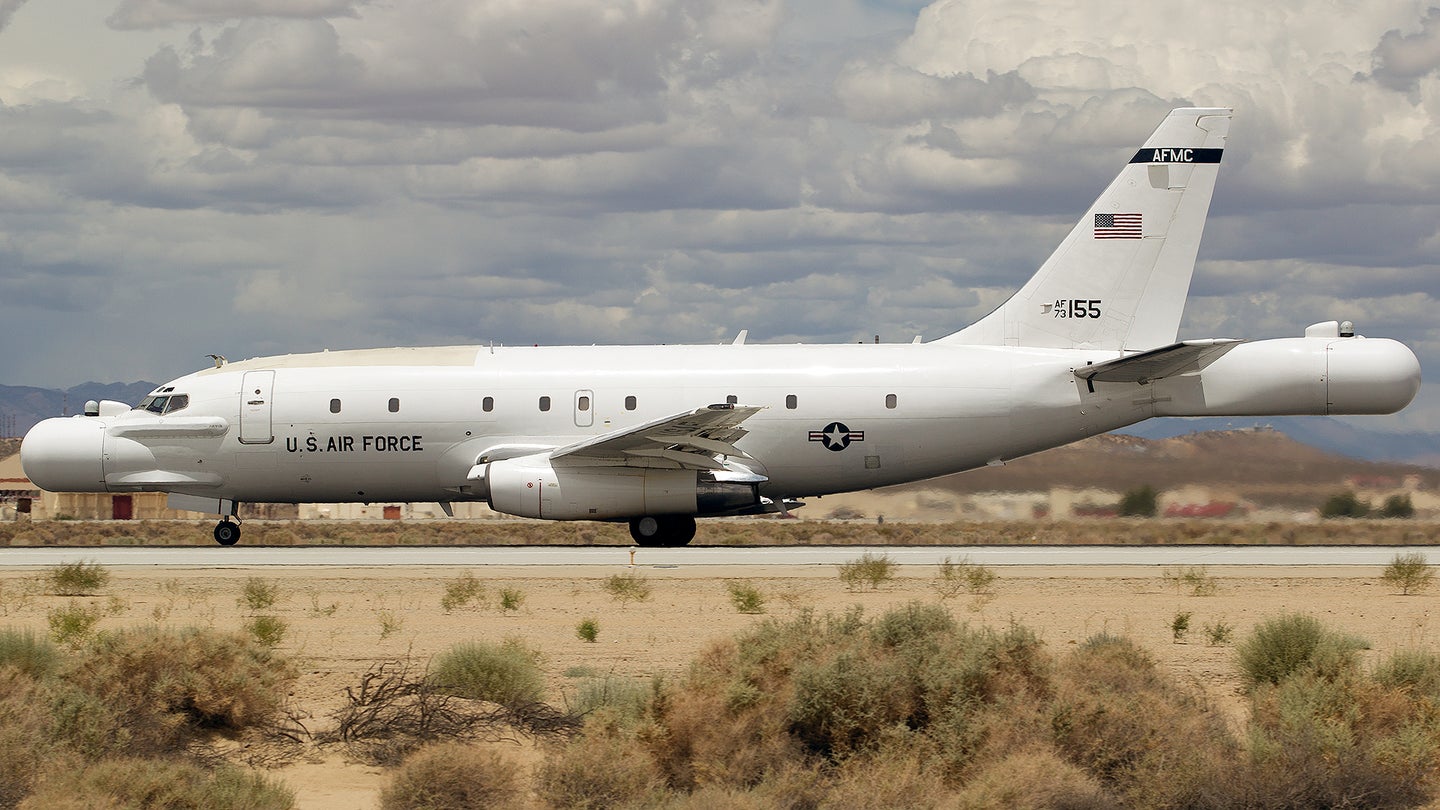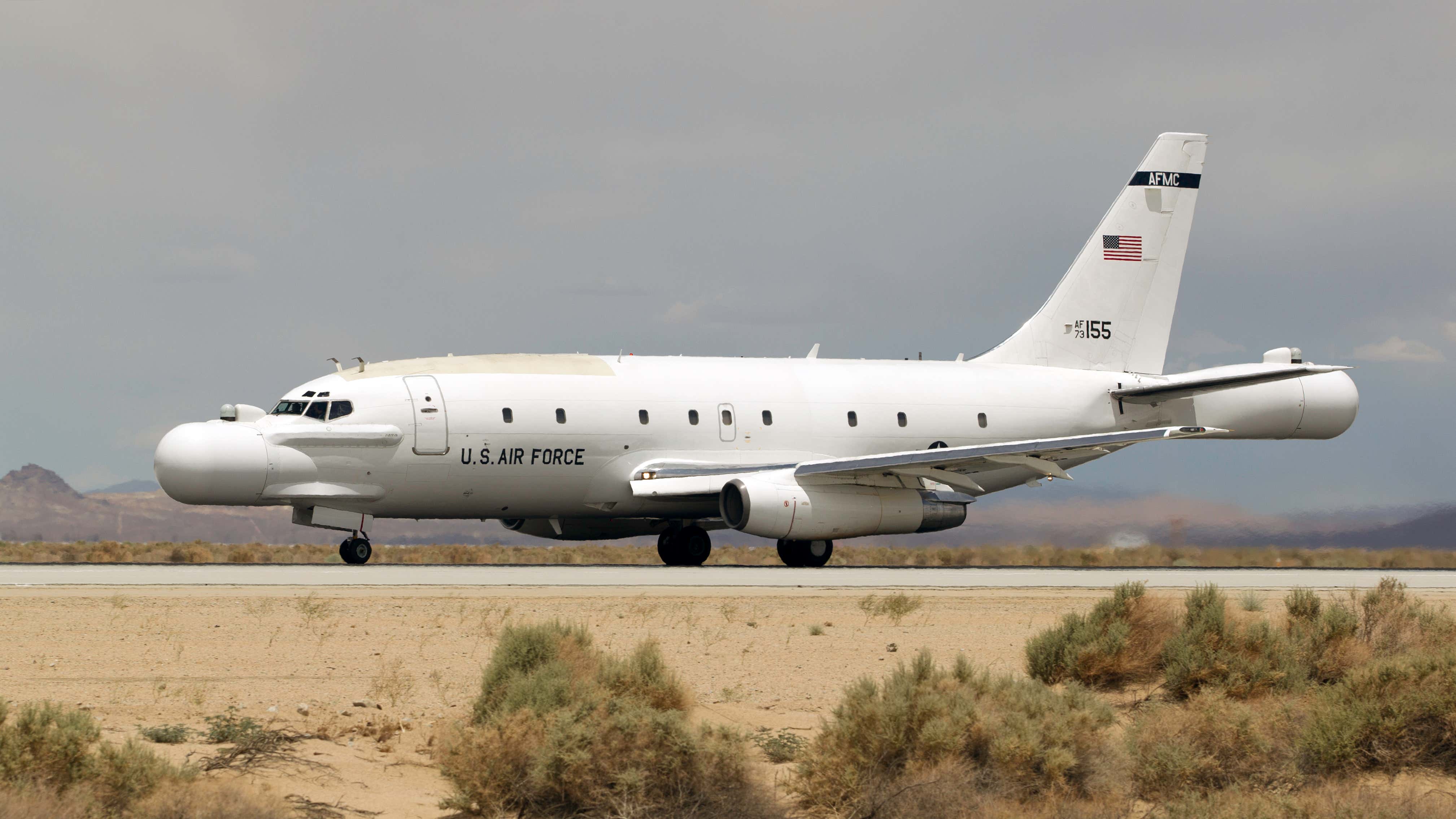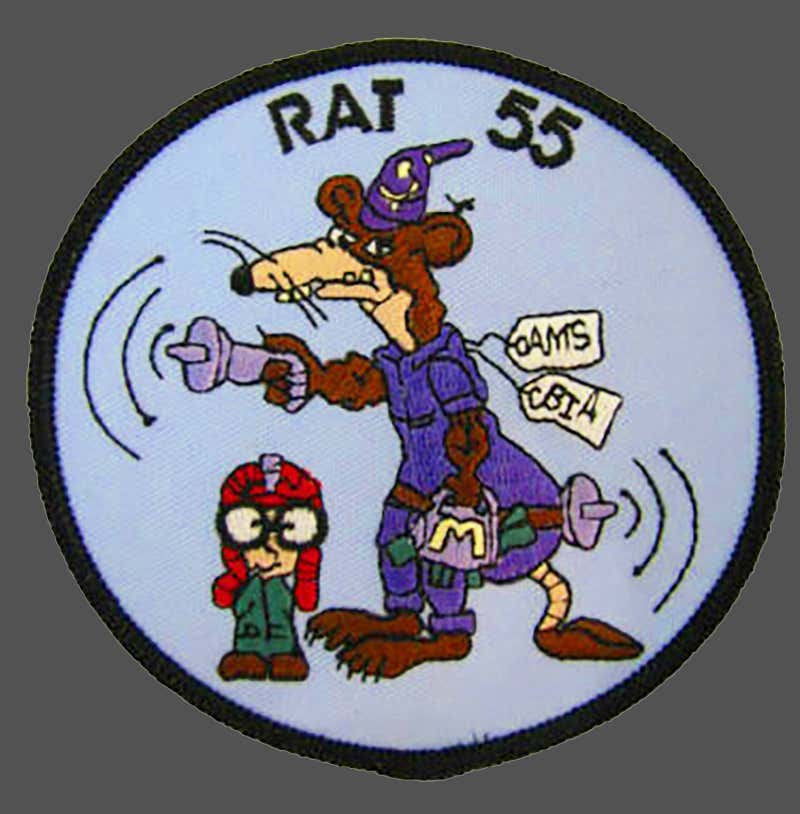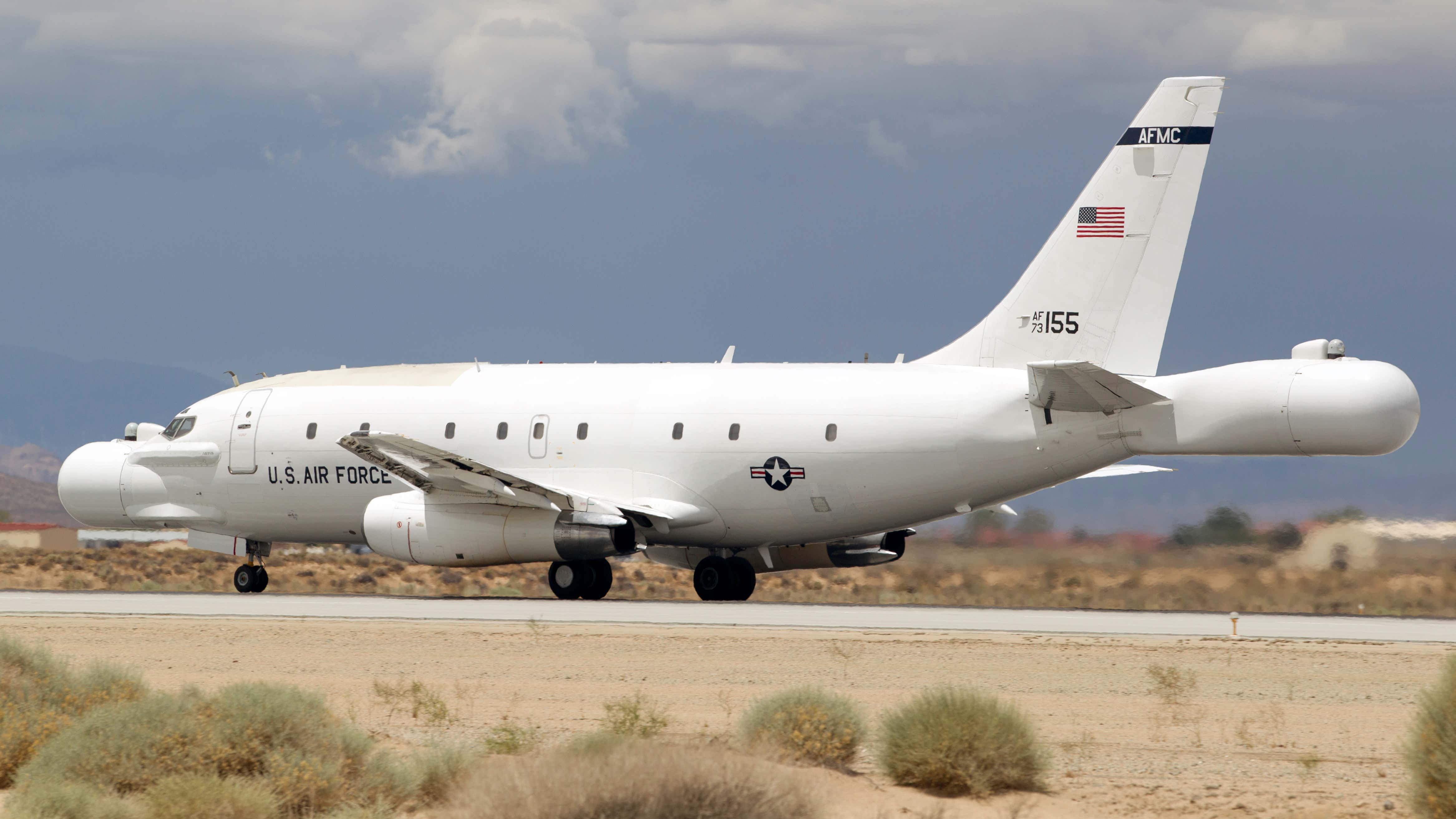The highly modified "RAT 55" bounces around between secretive test bases and is used to collect radar data on stealthy aircraft in-flight.

TYLER ROGOWAY
After what seemed like an extended hiatus, the world's most highly modified 737 has become quite active as of late, flying missions over the Mojave Desert relatively frequently, usually with a B-2 Spirit stealth bomber in tow. This is for good reason, as the shadowy NT-43A, better known by its callsign and nickname "RAT 55," is one of America's most prized test and evaluation assets for use in developing and validating low observable (stealth) technologies. The bizarre jet is extremely shy. In fact, nobody really knows where it lives, although it is known to bounce around from notorious locales like Area 51 and Tonopah Test Range Airport. Pretty much all images of it are from far away or are grainy and low-quality in nature. Now that is no longer the case.
The photos seen in this post, which give us a near-perfect look at this almost grotesque 737 adaptation, were taken during an escorted media visit to Edwards Air Force Base in California in 2014 by the Netherlands-based pro aviation photo journalism group Phodocu.

PHODOCU
The images show RAT 55, its nickname and callsign likely a play on its supposed name—Radar Airborne Testbed—and its tail number, in stunning details. The modifications to this aircraft are quite incredible, with its massive forward and aft radomes, along with the outsized structures to accommodate them, turning what was basically a 737-200 aircraft into a bizarre monstrosity, although a highly valuable one.

A RAT 55 patch pulls no punches as to the aircraft's less than beautiful nauture and its mission.
Also clearly seen are the infrared turrets above each radar, as well as the pitot air data sensors that look like bug antennas above the aircraft's cockpit. A number of non-standard antennas are present, as well as a discolored dorsal area on the forward end of the fuselage. We are aware that a top-mounted enclosure can be added to this area of the aircraft that can accommodate another sensor or even potentially a satellite communications system when it's installed.
Finally, the AFMC tailband is clearly visible, denoting that Air Force Materiel Command is who officially owns the almost ghost-like airframe.

PHODOCU
RAT 55 is set to be tasked more than ever before as the B-21 Raider bomber program emerges into the light and as other highly classified very low-observable aircraft projects move from development and into testing. There are many less advanced stealthy aircraft programs that will soon be in flight test that are likely to demand its precise 'flying radar-cross section measurement facility' services as well. This is why it seems as if a replacement for this aircraft, which is now nearly 50 years old, or a major augmentation to the existing capacity it provides, appears to be on the way via a far younger 737 that is undergoing modifications now. This aircraft appears to have emanated from the shadowy Delmar company that also brought RAT 55 to life, as well.
These Are The Best Images Yet Of "RAT 55," The World's Most Secretive 737
The highly modified "RAT 55" bounces around between secretive test bases and is used to collect radar data on stealthy aircraft in-flight.


